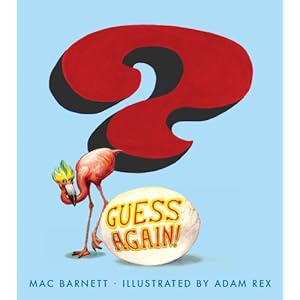Another too-long blog-silence, but not because of any lack of good books to write about! Since Basbusa has finished preschool for the year (making us officially homeschoolers now, I guess?), I've lost my handy one-child-in-school-and-the-other-one-napping blogging time. But they're getting better and better at entertaining each other, and with the lovely summer weather they can play in the garden much more, so I'm hopeful that I'll get twenty minutes to blog every so often!
My list of to-be-blogged-books has gotten alarmingly long yet again, so I'm going to zoom through some of these reviews in order to catch up a bit.
These first two, however, were such favorites that they can't be glossed over. I found
Tallulah's Tutu via a New York Times recommendation for the sequel,
Tallulah's Solo. I actually wasn't thrilled with the sequel when we eventually got around to it, but the original story was just delightful. Tallulah, an effervescent preschooler with an adoring little brother, is convinced that she would be a wonderful ballerina - if only she had a tutu. A lavender tutu, to be specific. So, her mother signs her up for ballet lessons, which she loves right from the very first moment. The tutu she so confidently expects, however, doesn't seem to be ready yet... maybe it's being flown in from Paris, she wonders? Three classes later, with no tutu yet appearing, Tallulah's great disappointment leads to the discovery that ballet slippers are not ideal footwear for stamping your foot while shouting! Ultimately, of course, there's a happy ending. Basbusa loved the story of a girl just her age starting out to learn something new and exciting, especially since two of her real-life best friends take ballet. I loved that it was ballet-oriented without straying into the realm of overwhelming girly-ness and idolization of all things pink and frilly, and that the illustrations showed such enthusiastic and engaged little dancers - with the sticking-out tummies and not-so-streamlined profiles of real preschoolers rather than of miniature ballerinas. Plus, there were gentle and preschooler-friendly messages about working to pursue your dreams, being patient, and being flexible (the Tallulah's tutu, in the end, is not lavendar, but red).

Next up is a slightly strange little book which Basbusa must have read about a million times.
Complete Adventures of the Mole Sisters is a compendium of ten (very very) short stories about the two not-particularly-cute moles shown on the cover. Plots ranged from the simple-but-cute (uh-oh, rain is coming into the mole-hole - let's dig a bath and swim in it!) - to the simple-but-odd (don't worry, little clump of moss, your life needn't be dull - we'll carry you up a hill and leave you there! Ummm... what?!?). These peculiarities didn't seem to bother Basbusa in the slightest, however, and she was delighted (as usual) with the small size of the book, and thrilled with how easily she could read the the easy-reader-like text. So, in the spirit of reflecting Basbusa's own true preferences, it's two thumbs up for the Mole Sisters.
And now for some quick reviews (please excuse the lack of detail!)
We chose
Dog Blue because we had both really liked
Penguin by the same author. In terms of plot, it's a little boy finally realizing his dream of getting a dog. Simple but sweet. I liked how the boy filled in with his imagination while waiting for his dream to come true, and I liked his creative solution when his dream-come-true turned out to be slightly different from his dream.
While Mama Had a Quick Little Chat is a story about what happened to Rose while she was waiting for her mother to finish her conversation with Uncle Fred. Party suppliers, guests, caterers, a band and a magician all make their appearance, much to Rose's astonishment and Basbusa's amusement, and then hurriedly disappear again when Mama finally gets off the phone. I think the other main factor that made this one appealing was that any little child can sympathize with a mother's seemingly endless "just a minute"s!
Let's Go describes a boy's trip to the corner grocery to buy some apples for his mother, but we see the journey has he views it through his imagination. The two-block walk takes him through a deep, dark forest, a rocky mountain, a beautiful but pirate-filled sea, and finally on tiptoe through the pirate's camp. The text is minimal, and very new-reader-friendly. Basbusa loves imagination games, and found the text encouragingly accessible (she read this one all alone, right off the bat). The illustrations are appealing, with a slight hint of "where's waldo" as you search for the boy in the midst of his imaginary surroundings.
Magnolia's Mixed-Up Magic was a fun, quick chapter book, just right for Basbusa's level: short chapters, exciting but preschooler-friendly plot, and a reading level that was a comfortable stretch. Magnolia and her grandmother discover an old magic book which turns out to have real, working spells in it - but the pages which explain how to undo the spells are missing. Mild mayhem ensues which is soon put to right, scaring off a thieving raccoon along the way.
And finally, a request: can anyone recommend preschooler-level picture books about poverty? With Ramadan coming up, I want to introduce Basbusa to the importance of helping the poor and giving in charity, but I don't think she has much of a concept of what "being poor" actually means. Thanks for any suggestions!
Linking up with
Read-Aloud Thursday and
What My Child is Reading.










































